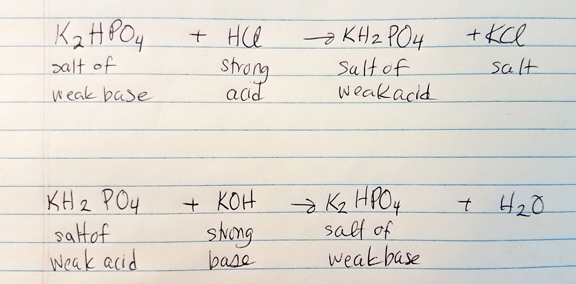The environment’s pH affects the growth of organisms. Generally, bacteria grows between pH 4-9 and optimally between pH 6.5-7.5. Fungi may be found in more acidic environments between a pH of 4-6.
Acidophiles: grow between pH 0-7 and optimally around pH 3.5.
Neutrophiles: grow between pH 3.5-10.5 and optimally around pH 7.
Alkalophiles: grow between pH 7-14 and optimally around pH 10.5.
The by-products of an organism’s metabolism may cause pH of the environment to shift (e.g. more acidic or more basic). A build-up of by-products could inhibit or be detrimental to the organism’s growth.
A buffer system (salt of a weak acid and salt of a weak base) may be added to the growth medium to help counter slight shifts in pH.
Clinical significance. Organisms can grow at human body temperature. Many organisms cannot tolerate the acidity of the stomach (pH 2.0). The skin is also a barrier as its pH is around 4-7. The varying pH of different systems in the body act as a stopgap to help prevent infections.
Reference
Cappuccino, J. G., & Welsh, C. (2018). Microbiology: A laboratory manual.

